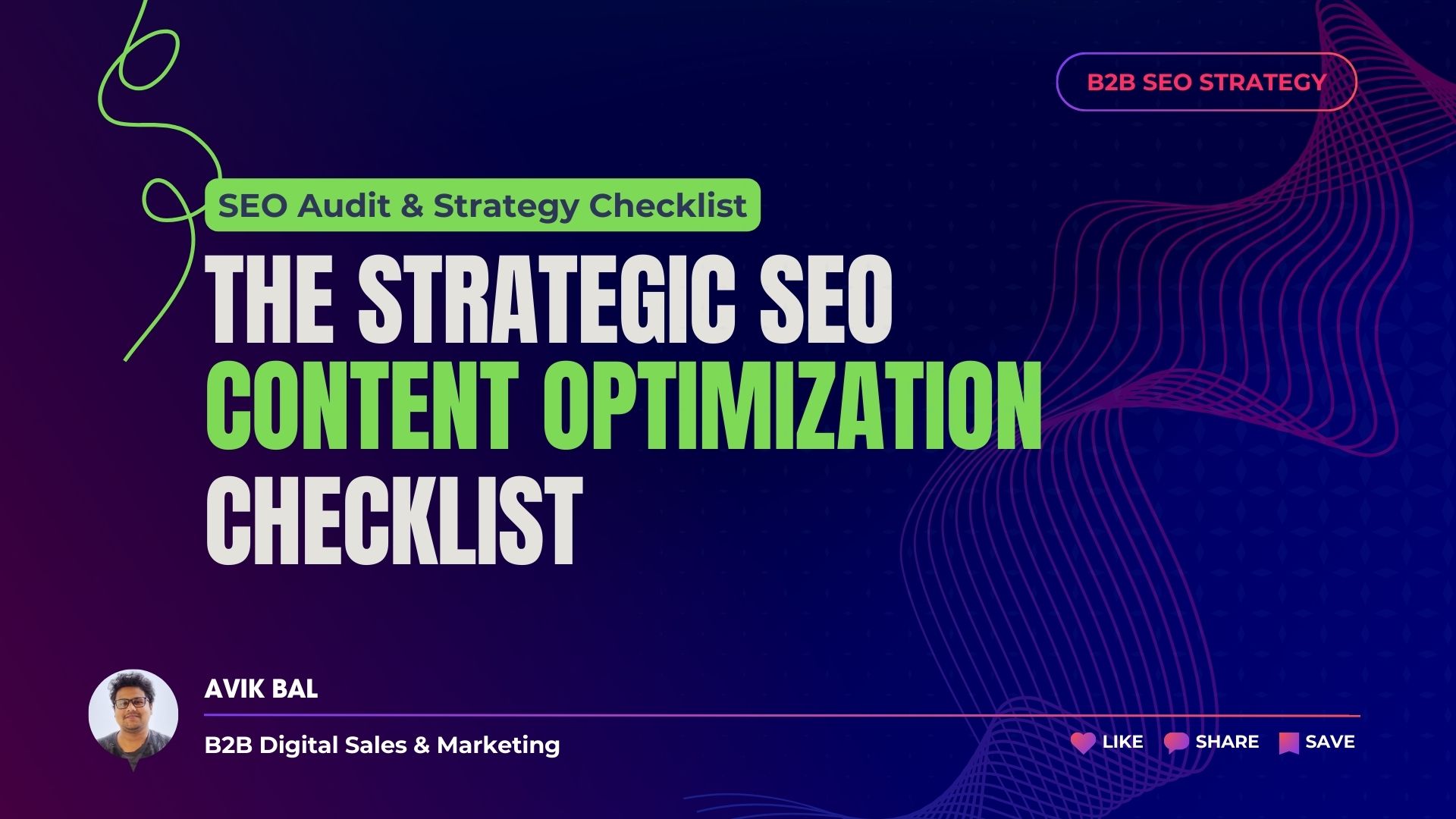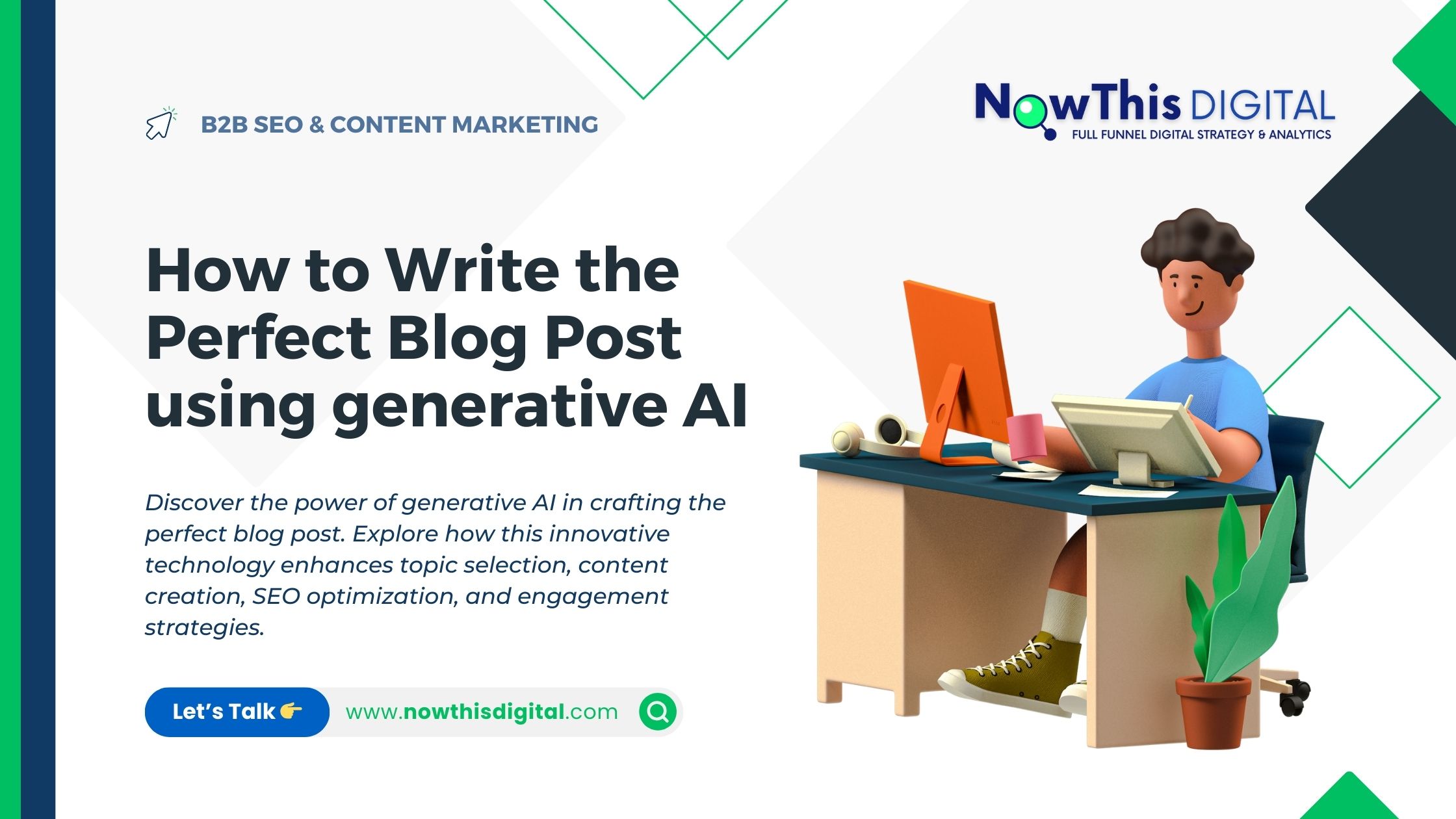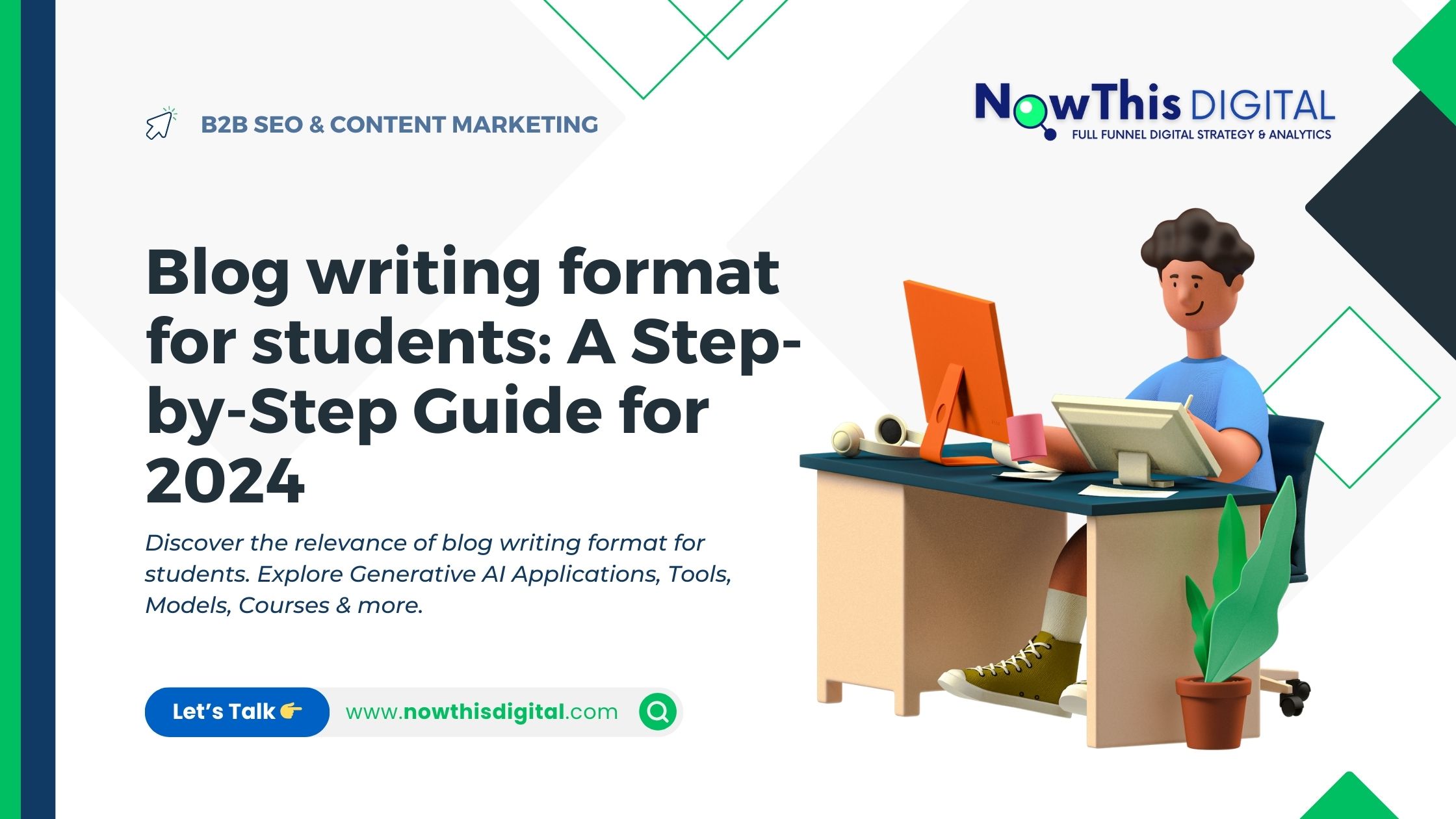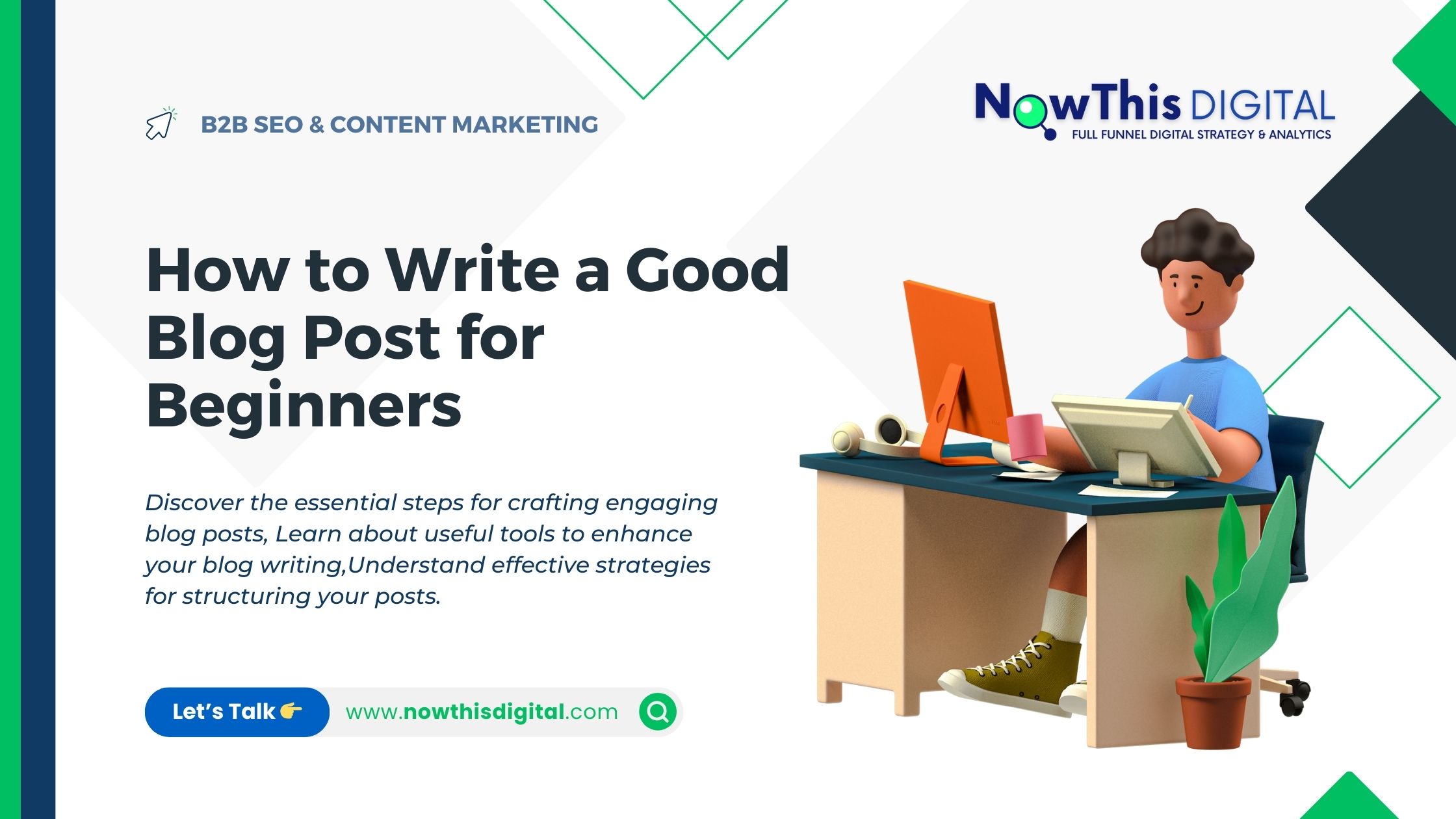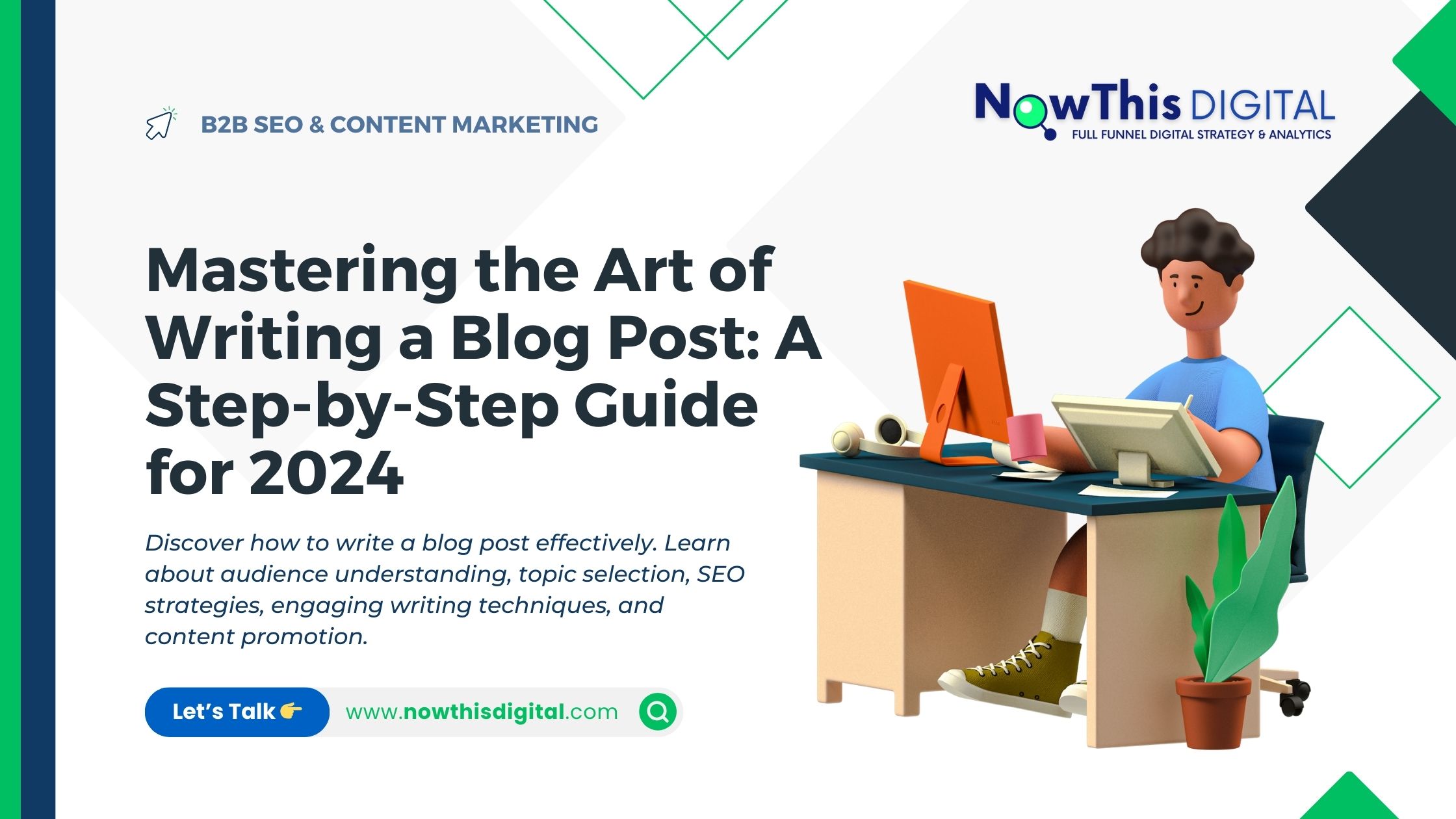B2B SEO In Lead Generation
B2B Lead Generation
In the competitive landscape of B2B marketing, generating high-quality leads is essential for business growth. B2B SEO (Search Engine Optimization) plays a pivotal role in driving targeted traffic, improving search visibility, enhancing user experience, and building authority. Let’s explore how B2B SEO can significantly boost your lead generation efforts.
Key Points on B2B SEO for Lead Generation
- Targeted Traffic: Optimizing for industry-specific keywords attracts relevant visitors.
- Improved Rankings: Higher search engine rankings make your business more discoverable.
- Better User Experience: Optimized site structure and speed keep potential leads engaged.
- Authority Building: Informative content establishes trust and credibility.
How NowThisDigital Can Bring Value to Your Company
- Comprehensive Keyword Research: Identify high-value, industry-specific keywords to target potential leads.
- On-Page Optimization: Improve website structure, meta tags, and content for better search engine visibility.
- Content Creation: Develop authoritative and engaging content to attract and nurture leads.
- Technical SEO: Ensure your website is fast, mobile-friendly, and easy to navigate.
- Link Building: Acquire high-quality backlinks to enhance your site’s authority.
- Analytics and Reporting: Track performance and adjust strategies for optimal results.
Overview of the B2B SEO Process
- Keyword Research
- On-Page Optimization
- Content Strategy
- Technical SEO
- Link Building
- Performance Tracking and Analysis
Step-by-Step Explanation of the B2B SEO Process
1. Keyword Research
Objective: Identify relevant keywords that potential leads are using to find services like yours.
- Industry Analysis: Understand your industry and target audience to determine the most effective keywords.
- Competitor Analysis: Analyze competitors to discover keyword opportunities and gaps.
- Keyword Tools: Use tools like Google Keyword Planner, SEMrush, and Ahrefs to find high-value keywords.
- Long-Tail Keywords: Focus on long-tail keywords that are specific and have lower competition, which can attract more targeted traffic.
2. On-Page Optimization
Objective: Improve website elements to rank higher in search results.
- Title Tags and Meta Descriptions: Craft compelling and keyword-rich titles and meta descriptions to improve click-through rates.
- Header Tags: Use H1, H2, and H3 tags to structure content and include relevant keywords.
- URL Structure: Create clean and descriptive URLs that include keywords.
- Internal Linking: Link related content within your website to improve navigation and SEO.
- Image Optimization: Use alt text and descriptive file names for images to enhance SEO and accessibility.
3. Content Strategy
Objective: Create valuable content that attracts, engages, and converts leads.
- Content Planning: Develop a content calendar with topics that address the needs and pain points of your target audience.
- Blog Posts: Write informative and engaging blog posts that include targeted keywords.
- Case Studies and Whitepapers: Showcase your expertise and success stories to build credibility.
- Videos and Infographics: Use multimedia content to make complex information easily digestible and shareable.
- Content Promotion: Share your content on social media, email newsletters, and industry forums to reach a wider audience.
4. Technical SEO
Objective: Ensure your website is technically sound for better search engine indexing and user experience.
- Site Speed: Optimize your website’s loading time by compressing images, using a content delivery network (CDN), and minifying CSS and JavaScript files.
- Mobile-Friendliness: Ensure your site is responsive and provides a seamless experience on mobile devices.
- XML Sitemap: Create and submit an XML sitemap to search engines to improve indexing.
- Robots.txt File: Use a robots.txt file to guide search engines on which pages to crawl and index.
- SSL Certificate: Secure your website with an SSL certificate to enhance trust and security.
5. Link Building
Objective: Acquire high-quality backlinks to boost your site’s authority and ranking.
- Guest Blogging: Write guest posts for reputable industry blogs to earn backlinks.
- Outreach: Reach out to industry influencers and websites to request backlinks.
- Broken Link Building: Find broken links on relevant websites and offer your content as a replacement.
- Social Media Promotion: Share your content on social media to increase visibility and attract backlinks.
6. Performance Tracking and Analysis
Objective: Monitor and analyze SEO performance to refine strategies.
- Analytics Tools: Use tools like Google Analytics and Search Console to track traffic, rankings, and user behavior.
- Key Metrics: Monitor key metrics such as organic traffic, bounce rate, conversion rate, and keyword rankings.
- Regular Reporting: Provide detailed reports to track progress and adjust strategies based on data.
- Continuous Improvement: Use insights from performance analysis to continually refine and improve your SEO efforts.
By implementing a robust B2B SEO strategy, NowThisDigital can help your business attract targeted leads, build authority, and convert visitors into loyal customers. Contact us today to learn more about how we can enhance your lead generation efforts through expert SEO services.




